1. Rational numbers on number line
- Books Name
- CBSE Class 7 Mathematics Book
- Publication
- Param Publication
- Course
- CBSE Class 7
- Subject
- Mathmatics
INTRODUCTION
The numbers of the form p/q, where p and q are integers and q ≠0 are called rational numbers.
![]()
Note :
• All natural numbers, whole numbers, integers and fractions are rational numbers.
• A fraction is a rational number, but a rational number may or may not be a fraction.
• Zero is also a rational number.
• Every natural number is a rational number but a rational number need not be a natural number.
2. Rational numbers between two or more rational numbers
- Books Name
- CBSE Class 7 Mathematics Book
- Publication
- Param Publication
- Course
- CBSE Class 7
- Subject
- Mathmatics
Properties of Rational Numbers
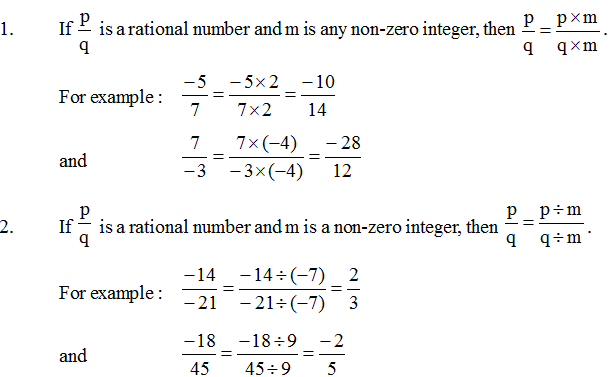
3. Four basic operations on Rational numbers
- Books Name
- CBSE Class 7 Mathematics Book
- Publication
- Param Publication
- Course
- CBSE Class 7
- Subject
- Mathmatics
The numbers of the form p/q, where p and q are integers and q ≠0 are called rational numbers.
![]()
Note :
• All natural numbers, whole numbers, integers and fractions are rational numbers.
• A fraction is a rational number, but a rational number may or may not be a fraction.
• Zero is also a rational number.
• Every natural number is a rational number but a rational number need not be a natural number.
EQUIVALENT RATIONAL NUMBERS
Two rational numbers are said to be equivalent if their standard forms are same.
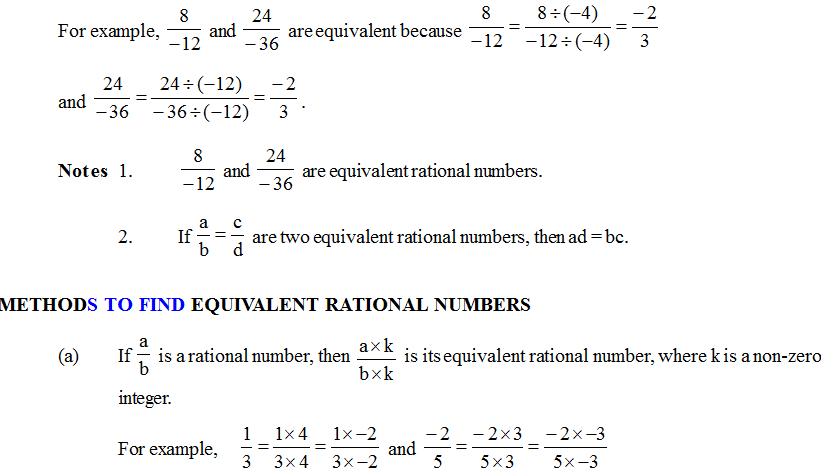

4. Rational numbers in standard form
- Books Name
- CBSE Class 7 Mathematics Book
- Publication
- Param Publication
- Course
- CBSE Class 7
- Subject
- Mathmatics
Types of Rational Numbers
1. Positive Rational Numbers :A rational number is said to be positive if its numerator and denominator are either both positive or both negative.
![]()
2. Negative Rational Numbers : A rational number is said to be negative if its numerator and denominator are such that one of them is a positive integer and the other is a negative integer.
![]()
5. Comparison of rational numbers
- Books Name
- CBSE Class 7 Mathematics Book
- Publication
- Param Publication
- Course
- CBSE Class 7
- Subject
- Mathmatics
Representation of rational numbers on number line
Draw a straight line. Take a point O on it. Call it 0 (zero). Set off equal distances on its right as well as on the left of 0. Such a distance is known as a units length. Clearly, the points A, B, C, D, E represent the integers 1, 2, 3, 4, 5 respectively and the points A', B', C', D', E' represent the integers –1, –2, –3, –4, –5 respectively.
![]()
Thus, we may represent any integer by a point on the number line. Clearly, every positive integer lies to the right of O and every negative integer lies to the left of O.
Illustration 2
![]()
Solution:
Draw a line, take a point O on it, let it represent 0.
![]()
From O, set off unit distances OA, AB and BC to the right of O. Clearly, the points A, B and C represent the integers 1, 2 and 3 respectively. Now, take 2 units OA and AB, and divide the third unit BC into 5 equal parts. Take 3 parts out of these 5 parts to reach at a point P. Then the point P represents the rational number ![]()
![]()
Again, from O, set off unit distances to the left. Let these segments be OA’, A’ B’, B’C’, etc. Then, clearly the points A’, B’ and C’ represent the integers –1,–2,–3 respectively.
![]()
Take 2 full unit lengths to the left of O. Divide the third unit B’C’ into 5 equal parts. Take 3 parts out of these 5 parts to reach a point P’.
Then, the point P’ represents the rational number ![]()
Thus, we can represent every rational number by a point on the number line.
6. Rational numbers between two rational numbers
- Books Name
- CBSE Class 7 Mathematics Book
- Publication
- Param Publication
- Course
- CBSE Class 7
- Subject
- Mathmatics
SIMPLEST (LOWEST) OR STANDARD FORM OF A RATIONAL NUMBER
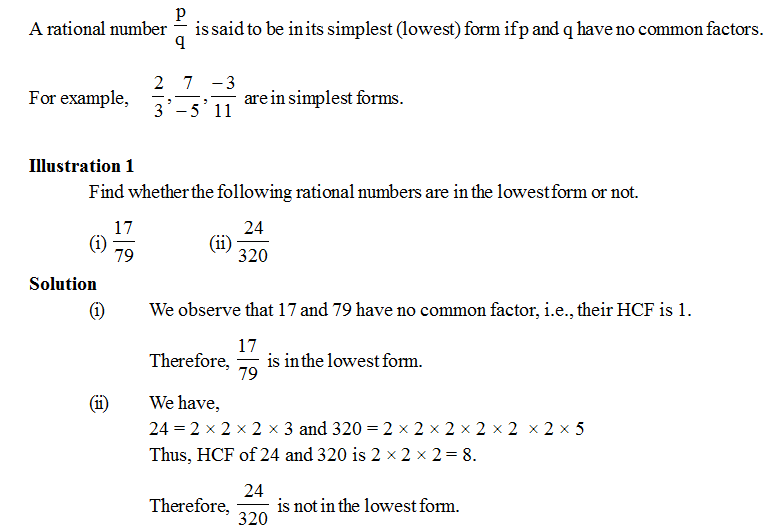
7. Operations on rational numbers
- Books Name
- CBSE Class 7 Mathematics Book
- Publication
- Param Publication
- Course
- CBSE Class 7
- Subject
- Mathmatics
Comparing two rational numbers
In order to compare any two rational numbers, we can use the following steps :
Step I Obtain the given rational numbers.
Step II Write the given rational numbers so that their denominators are positive.
Step III Find the LCM of the positive denominators of the rational numbers obtained in step II.
Step IV Express each rational number (obtained in step II) with the LCM (obtained in step III) as common denominator.
Step V Compare the numerators of rational numbers obtained in step IV. The number having greater numerator is the greater rational number.
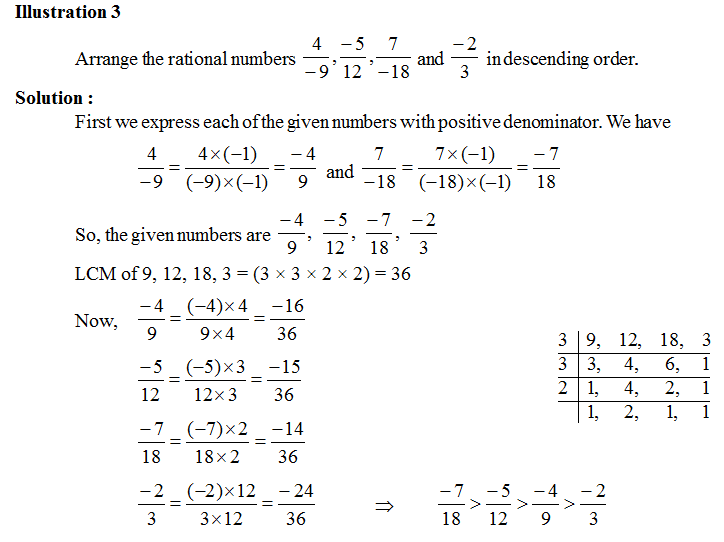
Rational Numbers Between Two Rational Numbers
- Books Name
- CBSE Class 7 Mathematics Book
- Publication
- Param Publication
- Course
- CBSE Class 7
- Subject
- Mathmatics
RATIONAL NUMBERS BETWEEN TWO RATIONAL NUMBERS
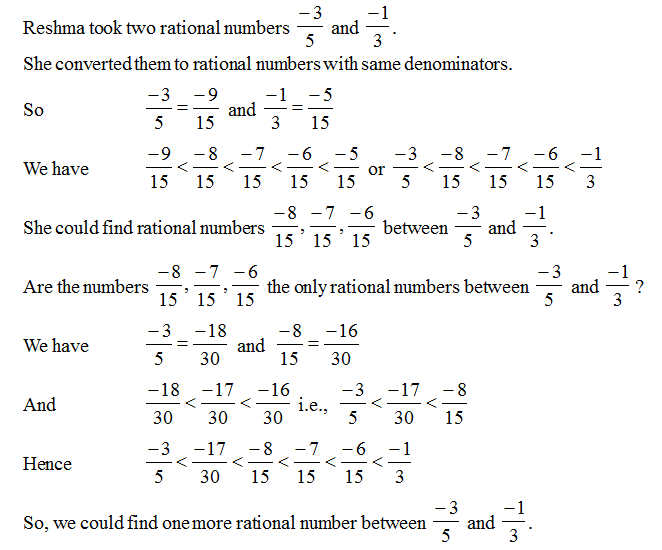
By using this method, you can insert as many rational numbers as you want between two rational numbers.
Note: (i) There exist infinite rational numbers between two given rational numbers.
(ii) Between two successive integers the number of integers is 0.
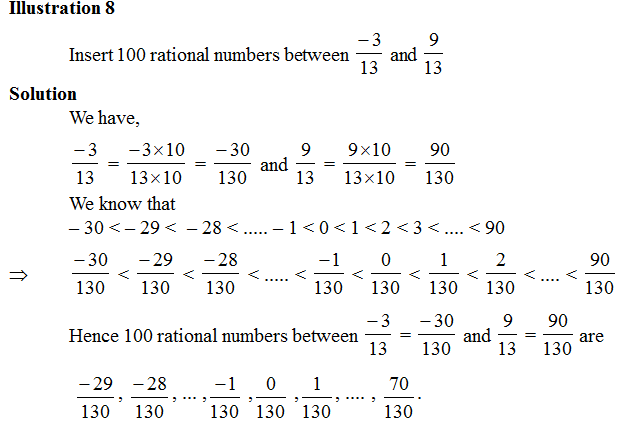
Operations on Rational Numbers
- Books Name
- CBSE Class 7 Mathematics Book
- Publication
- Param Publication
- Course
- CBSE Class 7
- Subject
- Mathmatics
Basic mathematical Operations on Rational numbers
1. Addition of rational numbers
Suppose we have to add two given rational numbers. First convert each of them into a rational number with a positive denominator.
Case I : When Denominators of Given Numbers are Equal :
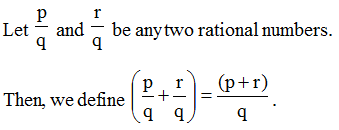
Thus, in order to add two rational numbers with the same denominator, we simply add their numerators and divide the sum by the common denominator.
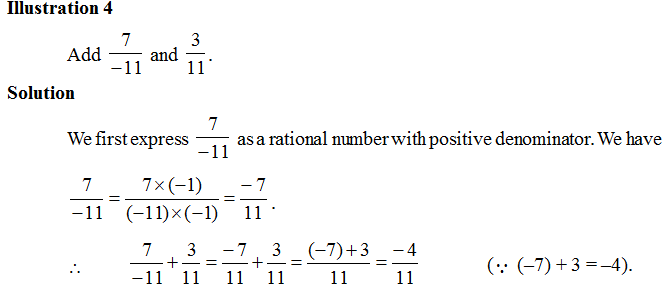
Case II : When Denominators of Given Numbers are Unequal :
Step 1 Taken the LCM of the denominators of the given rational numbers.
Step 2 Express each of the given rational numbers with the above LCM as the common denominator.
Step 3. Now, add the numbers as shown in above example.
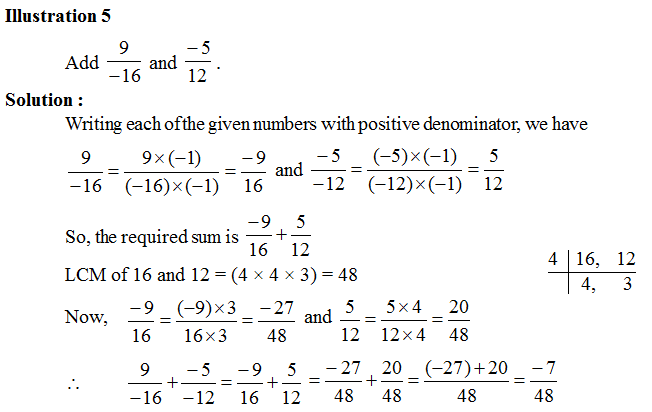
2. Subtraction of rational numbers
Subtraction is the inverse process of addition, i.e. in subtraction we add the additive inverse of a number.
Hence, additive inverse of a rational number is negative of that rational number.

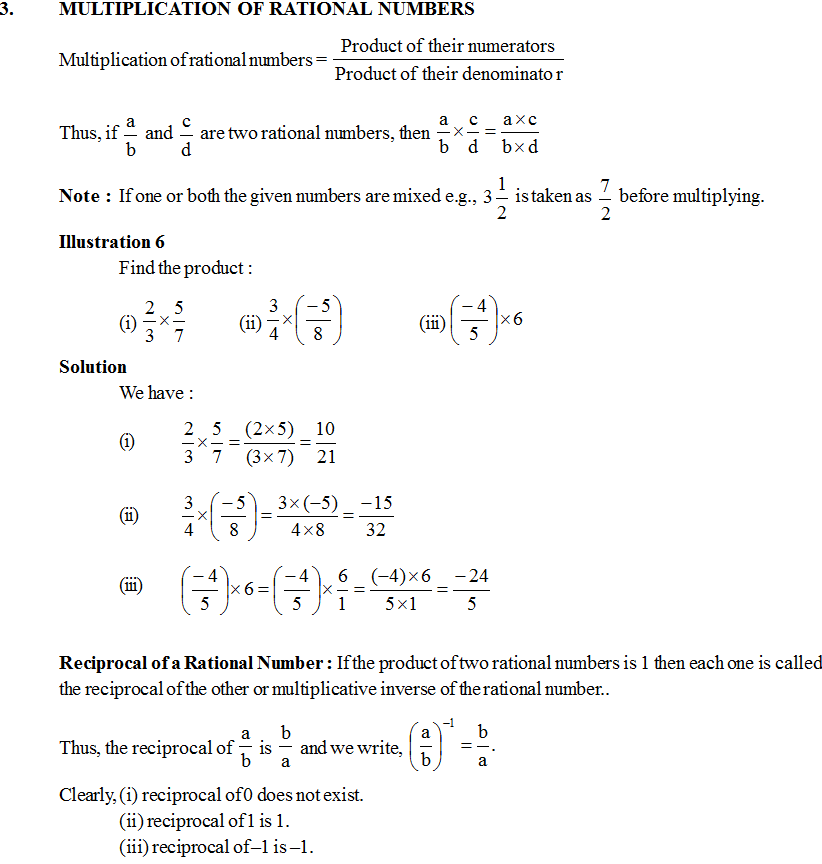
4. Division of rational numbers
We know that division is the inverse of multiplication. So to divide a rational number by another rational number is the same as multiplying the first number by the multiplicative inverse (reciprocal) of the second number.
![]()
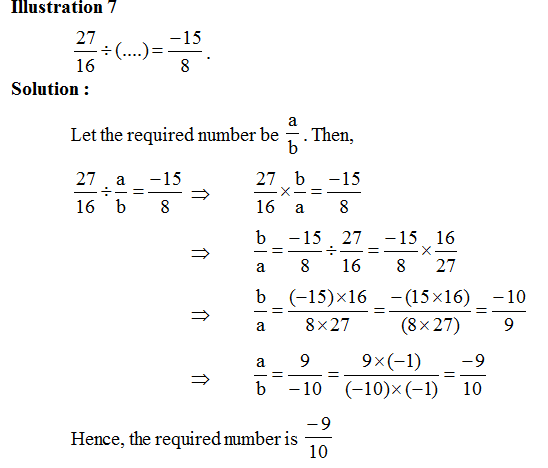

 ReginaTagebücher
ReginaTagebücher
 Param Publication
Param Publication
